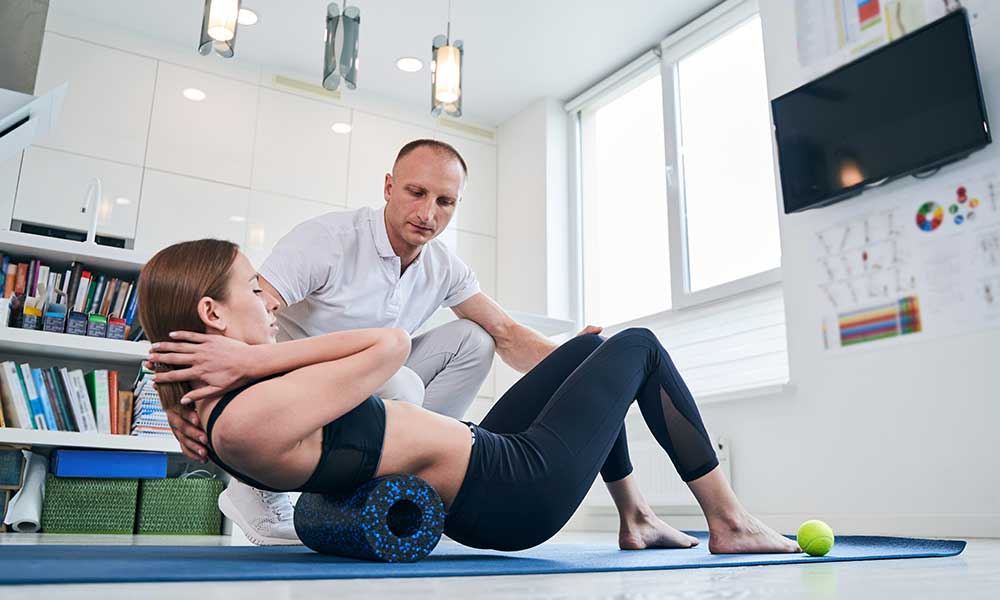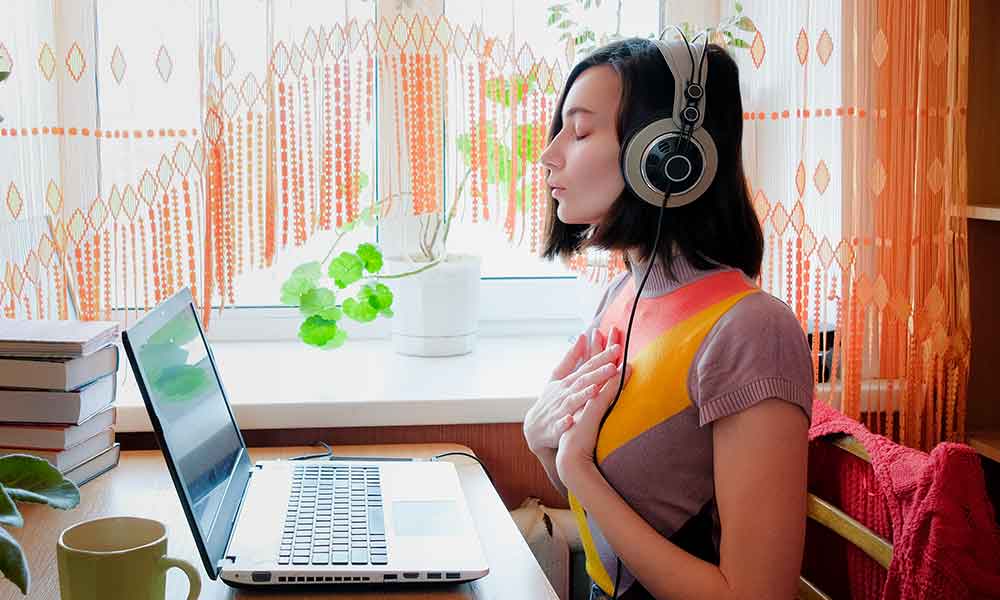Your workplace is a hub of creativity. It’s the place where we come together to find solutions to complex problems, brainstorm new ideas, and push industry boundaries. But cultivating and sustaining creativity in an environment as complex as the workplace can be a challenge.
Enter workplace wellbeing programs: A relatively new strategy designed to maximize creativity and innovation in the workplace. Through wellness programs that promote improved mental health, physical activity, nutrition, community building, and other aspects of wellbeing, employers can create a culture of creative collaboration and ensure their team is feeling inspired and empowered to bring their best ideas forward.
In this article, we’ll explore how your workplace wellbeing program can help unlock employees’ hidden potentials –– laying the foundation for innovative thinking that can drive your business forward.

Why Workplace Wellbeing Matters for Creativity
Creativity is one of the most important factors in success in today’s world—no matter what industry you’re in. But it doesn’t always come easy. It takes the right environment and resources to help unlock your creative potential. And this is where workplace wellbeing programs come into play.
A recent study found that organizations that prioritize employee health and wellbeing are 3.5 times more likely to foster creativity and innovation in the workplace. That’s because mental wellness directly relates to creativity and innovation, meaning that companies must create a space where their employees can thrive in order to get the most out of them.
By promoting creativity-related skills in employees—like problem solving, critical thinking, communication, and collaboration—companies can improve their employees’ wellbeing while seeing direct benefits to their business performance. This balance of mental wellness and a creative workplace environment will keep employees engaged, productive, and inspired to create their best work.
Providing Autonomy and Flexibility: Keys to Creative Freedom
Creativity is essential in almost any workplace—but it’s hard to generate innovative ideas when employees are tethered to rigid workplace policies and lack freedom and autonomy.
That’s why having creative and flexible workplace wellbeing programs is key. When employees are given the freedom to manage their own work-life balance and adapt to their respective roles, they can think freely, make independent decisions, and come up with creative solutions. Autonomy leads not only to greater job satisfaction but higher employee engagement as well.
Flexible work arrangements also provide greater freedom and autonomy—which leads to an overall improvement in efficiency. When employees no longer need to conform to strict corporate policies, they are able to leverage their capacity for creativity and productivity. This allows them to become more empowered both professionally and personally—which then translates into better work performance. They’re also more likely to enjoy coming into work every day which further boosts morale, productivity and creativity!
Fostering Strong Workplace Relationships to Spark New Ideas
If you want to unlock your team’s creativity, you need to build strong workplace relationships. All successful teams rely on five essential ingredients: communication, collaboration, culture, creativity, and commitment. Network ties are also important; they can make or break innovation and productivity in the workplace. How do these relationships work?
Mutual Positive Regard
Strong connections in the workplace all come down to mutual positive regard. This means respecting each other’s space and boundaries, as well as looking out for each other’s wellbeing. Without it, communication is often superficial and creates an environment of suspicion and distrust. Trust is key—teams need to trust each other to cooperate effectively and efficiently.
Trust and Understanding
Without trust, there can be no understanding between team members; this is essential for problem-solving, decision-making, and meeting goals. In a healthy work environment, every team member should feel respected for their ideas and their individual contribution—this creates open lines of communication where everyone’s thoughts are valued.
Your team members must communicate often to bring their ideas together into something great. Creativity will spark when everyone feels like they have the opportunity to contribute without judgment or fear of failure—that’s why fostering strong workplace relationships is so important for maximizing innovation!
Reducing Stress and Anxiety for an Innovative Mindset
One of the most important aspects of workplace wellbeing programs is that they help to reduce stress and anxiety for employees. Research has shown that listening to music can reduce cortisol levels and subjective feeling of anxiety. Technology can also be used to reduce stress with games like “The Journey to the Wild Divine,” which is a video game designed to teach meditation skills. Studies have found that meditation can help ease the mind, increase focus, and decrease stress overall.
This reduction in stress and anxiety creates an ideal environment where creativity can bloom as employees are more relaxed and open-minded. The right balance of workplace wellbeing activities creates a low-pressure atmosphere which encourages people to reach their potential and be more innovative in their work. In addition, these positive vibes can carry into other areas of life as well, resulting in an overall improved lifestyle for everyone involved.

Promoting Healthy Habits to Boost Workplace Creativity
Have you ever noticed how, when you’re feeling run down and exhausted, creativity takes a backseat? That’s why offering classes to help employees develop healthy habits goes a long way in encouraging creativity—it keeps them feeling energized and ready to tackle the day.
Classes might include yoga, stretching, or stress management. Or even something like meditation or mindfulness trainings. Whatever it is, investing in employee health and wellbeing helps them stay energized and motivated to come up with outside-the-box ideas.
Healthy Office Space
Just as importantly is investing in making the office space a comfortable environment. This could mean anything from providing better lighting options to making sure there are comfortable chairs for employees to think in—because creative ideas often come when you’re nice and relaxed!
Healthy Food Choices
Offering healthy snacks and lunch options onsite encourages employees to make better choices for their bodies every day—leading to more creative ideas flowing throughout the workspace. So instead of running out for unhealthy fast food between meetings or over lunch, employees now have some easy-to-grab options that keep them going during the day without a post-lunch slump setting in.
Measuring the Impact of Wellbeing on Workplace Innovation
It’s one thing to create a workplace wellbeing program, but it’s another to actually measure the impact of that program on your productivity and creativity at work.
Fortunately, there are several ways employers can measure the health and well-being of their employees through their wellness programs. One way is through surveys—ask your employees how they are feeling and what they need in terms of resources to feel better. It’s important that employers take into account the responses to these surveys, as studies have found that employee mental wellness is directly related to creativity and innovation at work.
Another way employers can measure the success of their wellness program is by the number of people participating in it. According to a recent study, 64% of companies have introduced new well-being offerings to support their staff—this suggests that employees understand and value the importance of mental wellbeing in the workplace.
Measuring and understanding how a company’s investment into its employees’ health translates into innovation will be an essential step in fostering creativity at work.
Conclusion
Unlocking creativity in the workplace isn’t just about putting pen to paper and generating clever ideas. It’s about creating an environment where everyone feels safe and supported so they’re able to bring their best self to work, express their ideas without fear of judgment, and practice self-care in order to stay healthy and innovate.
Organizing workplace wellbeing programs and having honest conversations about mental health can be a great way of building that kind of culture in your workplace. By fostering an atmosphere of openness, respect, trust, and appreciation, you can not only create an innovative, creative workspace, but also a more fulfilling one.































